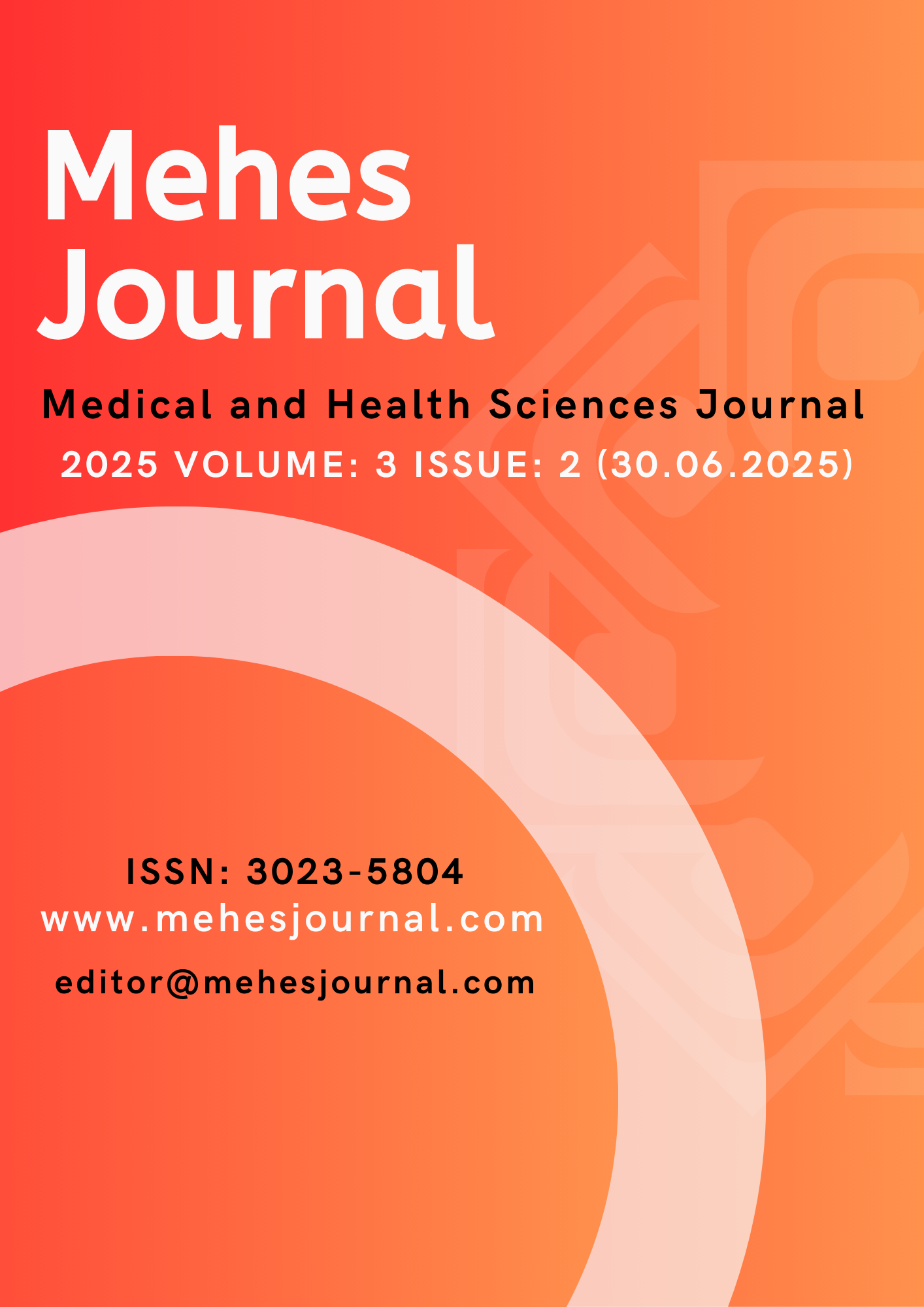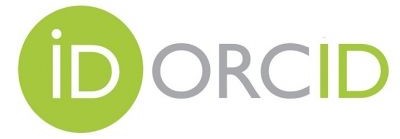Development Process and Clinical Application of Artificial Oxygen Carriers
DOI:
https://doi.org/10.5281/zenodo.15775627Keywords:
Artificial oxygen carriers, Hemoglobin based carriers, Perfluorocarbon based oxygen carriers, Stem cell based oxygen carriers, O₂ microbubblesAbstract
Artificial oxygen carriers have been developed as alternatives to erythrocytes in situations involving trauma, surgical interventions, childbirth, gastric ulcers, hemorrhagic shock, vascular rupture, and other conditions that result in sudden blood volume loss. Through these carriers, therapeutic oxygen delivery presents a promising approach for the treatment of various disease models. However, the development of stable, non-toxic, and immunologically inert artificial oxygen carriers remains a critical need. Despite numerous challenges encountered during their development, the application of these carriers has been demonstrated in a wide range of clinical settings, including elective and cardiovascular surgeries, hemorrhagic shock, decompression sickness, acute stroke, myocardial infarction, sickle cell crisis, and cerebral hypoxia.
This review comprehensively examines the roles of various types of artificial oxygen carriers used in therapeutic oxygen delivery, including hemoglobin-based, perfluorocarbon-based, stem cell-derived, and oxygen micro/nanobubble systems. In addition, potential side effects and limitations associated with these approaches are evaluated in the context of completed and ongoing studies as well as current clinical advancements. Furthermore, the review aims to contribute to the existing literature and guide future research by outlining the essential requirements for the development of ideal artificial oxygen carriers and proposing prospective solutions.
References
Cherian VT. Physiological functions of blood. In: Liu H, Kaye AD, Jahr JS, editors. Blood substitutes and oxygen biotherapeutics. Cham, Switzerland: Springer; 2022. p. 33–43.
Liu H, Kaye AD, Verbeek T, Brennan K, Dalal R, McQuillan P, et al. Classifications of blood substitutes. In: Liu H, Kaye AD, Jahr JS, editors. Blood substitutes and oxygen biotherapeutics. Cham, Switzerland: Springer; 2022. p. 119–29.
Bai L, Shi E, Li Y, Wang L, Zhang X, Yu M, et al. Oxyhemoglobin-based nanophotosensitizer for specific and synergistic photothermal and photodynamic therapies against Porphyromonas gingivalis oral infection. ACS Biomater Sci Eng. 2023;9(1):485–97.
Warner MA, Weyand AC. The global burden of anemia. In: Liu H, Kaye AD, Jahr JS, editors. Blood substitutes and oxygen biotherapeutics. Cham, Switzerland: Springer; 2022. p. 53–9.
Tao Z. & Ghoroghchian P.P., “Microparticle, nanoparticle, and stem cell based oxygen carriers as advanced blood substitutes,” Trends in Biotechnology, June 2014, 32(9):466–473.
Chen L, Wang Z, Xu Q, Liu Y, Chen L, Guo S, et al. The failure of DAC to induce OCT2 expression and its remission by hemoglobin-based nanocarriers under hypoxia in renal cell carcinoma. Theranostics. 2020;10(8):3562–3578.
Sen Gupta A, Doctor A. Oxygen carriers. In: Damage Control Resuscitation. 2020;197–222.
Cebrino J, Portero de la Cruz S. A worldwide bibliometric analysis of published literature on workplace violence in healthcare personnel. PLoS One. 2020;15(11): e0242781.
Padsalgikar AD. Cardiovascular system: structure, assessment, and diseases. In: Padsalgikar AD, editor. Plastics in medical devices for cardiovascular applications. Norwich: William Andrew Publishing; 2017. p. 103–132.
Pittman RN. Regulation of tissue oxygenation. San Rafael (CA): Morgan & Claypool Life Sciences; 2011
Bialas C, Moser C, Sims CA. Artificial oxygen carriers and red blood cell substitutes: a historic overview and recent developments toward military and clinical relevance. J Trauma Acute Care Surg. 2019;87(Suppl 1): S48–S58.
Benner A, Patel AK, Singh K, Dua A. Physiology, Bohr effect. Treasure Island: StatPearls Publishing; 2022.
Cooper CE, Bird M, Sheng X, Choi JW, Silkstone GGA, Simons M, et al. Stability of maleimide PEG and mono sulfone PEG conjugation to a novel engineered cysteine in the human hemoglobin alpha subunit. Frontiers in Chemistry. 2021; 9:707797.
Li X, Dao M, Lykotrafitis G, Karniadakis GE. Biomechanics and biorheology of red blood cells in sickle cell anemia. J Biomech. 2017; 50:34–41.
Jägers J, Wrobeln A, Ferenz KB. Perfluorocarbon-based oxygen carriers: from physics to physiology. Pflugers Arch. 2021; 473:139–150.
Haldar R, Gupta D, Chitranshi S, Khan S, Rizvi SI. Artificial blood: a futuristic aspect of modern transfusion sciences. Cardiovasc Hematol Agents Med Chem. 2019; 17:11–16.
Khan F, Singh K, Friedman MT. Artificial blood: the history and current perspectives of blood substitutes. Discoveries (Craiova, Romania). 2020; 8:104.
Bedőcs P, Szebeni J. The critical choice of animal models in nanomedicine safety assessment: a lesson learned from hemoglobin-based oxygen carriers. Front Immunol. 2020; 11:584966.
Bachert SE, Dogra P, Boral LI. Alternatives to transfusion. Am J Clin Pathol. 2020;153(3):287–93
Jansman MMT, Hosta-Rigau L. Recent and prominent examples of nano- and microarchitectures as hemoglobin-based oxygen carriers. Adv Colloid Interface Sci. 2018; 260:65–84.
Lupon E, Lellouch AG, Zal F, Cetrulo CL Jr., Lantieri LA. Combating hypoxemia in COVID-19 patients with a natural oxygen carrier, HEMO2Life® (M101). Med Hypotheses. 2021; 146:110421.
Ferenz KB, Steinbicker AU. Artificial oxygen carriers—past, present, and future—a review of the most innovative and clinically relevant concepts. J Pharmacol Exp Ther. 2019; 369:300–310.
Jahr JS, Guinn NR, Lowery DR, Shore-Lesserson L, Shander A. Blood substitutes and oxygen therapeutics: a review. Anesth Analg. 2021;132(1):119–129.
Sen Gupta A. Bio inspired nanomedicine strategies for artificial blood components. Wiley Interdiscip Rev Nanomed Nanobiotechnol. 2017.
Kao I, Xiong Y, Steffen A, Smuda K, Zhao L, Georgieva R, et al. Preclinical in vitro safety investigations of submicron sized hemoglobin-based oxygen carrier HbMP-700. Artif Organs. 2018;42(5):549–559.
Kawaguchi AT, Salybekov AA, Yamano M, Lee EJ, Kim JH, Park SM, et al. PEGylated carboxyhemoglobin bovine (SANGUINATE) ameliorates myocardial infarction in a rat model. Artif Organs. 2018;42(11):1174–1184.
Azuma H, Amano T, Kamiyama N, Takehara N, Jingu M, Takagi H, et al. First-in-human phase 1 trial of hemoglobin vesicles as artificial red blood cells developed for use as a transfusion alternative. Blood Adv. 2022;6(18):5711–5.
Paciello A, Amalfitano G, Garziano A, Urciuolo F, Netti PA. Hemoglobin conjugated gelatin microsphere as a smart oxygen releasing biomaterial. Adv Healthc Mater. 2016;5(20):2655–66.
Zhang Q, Ma YX, Dai Z, Zhang B, Liu SS, Li WX, et al. Tracking research on hemoglobin-based oxygen carriers: a scientometric analysis and in-depth review. Drug Des Devel Ther. 2023; 17:2549–71.
Mayer D, Guerrero F, Goanvec C, Hetzel L, Linders J, Ljubkovic M, et al. Prevention of decompression sickness by novel artificial oxygen carriers. Med Sci Sports Exerc. 2020;52(10):2127–35.
Lambert E, Gorantla VS, Janjic JM. Pharmaceutical design and development of perfluorocarbon nanocolloids for oxygen delivery in regenerative medicine. Nanomedicine. 2019; 14:2697–2712.
Spahn DR. Artificial oxygen carriers: a new future? Critical Care. 2018; 22:46.
Göç Ö, Demircioğlu M. Kardiyovasküler hastalıklarda kök hücre tedavisi. Europeanatolia Sağlık Bilimleri Dergisi. 2023;1(2):87-91.
Shah S, Huang X, Cheng L. Concise review: stem cell-based approaches to red blood cell production for transfusion. Stem Cells Transl Med. 2014;3(3):346–55.
Le Pape F, Bossard M, Dutheil D, Rousselot M, Polard V, Férec C, et al. Advancement in recombinant protein production using a marine oxygen carrier to enhance oxygen transfer in a CHO-S cell line. Artif Cells Nanomed Biotechnol. 2015;43(3):186–95.
Khan MS, Hwang J, Seo Y, Kim Y, Lee K, Park J, et al. Engineering oxygen nanobubbles for the effective reversal of hypoxia. Artif Cells Nanomed Biotechnol. 2018;46(Suppl 1): S318–27.
Khan MS, Hwang J, Lee K, Choi Y, Kim K, Koo H-J, et al. Oxygen-carrying micro/nanobubbles: composition, synthesis techniques and potential prospects in photo-triggered theranostics. Molecules. 2018;23(9): E2210.
Huang J, Leng X, Jiang T, Xu L, Zheng J, Fang M, et al. Oxygen-carrying nanoplatform to reprogram tumor immunosuppressive microenvironment and enhance photothermal-immunotherapy. Mater Today Bio. 2023; 19:100555.
Mohanto N, Mondal H, Park YJ, Jee JP. Therapeutic delivery of oxygen using artificial oxygen carriers demonstrates the possibility of treating a wide range of diseases. J Nanobiotechnol. 2025; 23:25.
Kim J H, Jung E A, Kim J E. Perfluorocarbon-based artificial oxygen carriers for red blood cell substitutes: considerations and direction of technology. J Pharm Investig. 2024.
Downloads
Published
How to Cite
Issue
Section
License
Copyright (c) 2025 MEHES JOURNAL

This work is licensed under a Creative Commons Attribution 4.0 International License.










